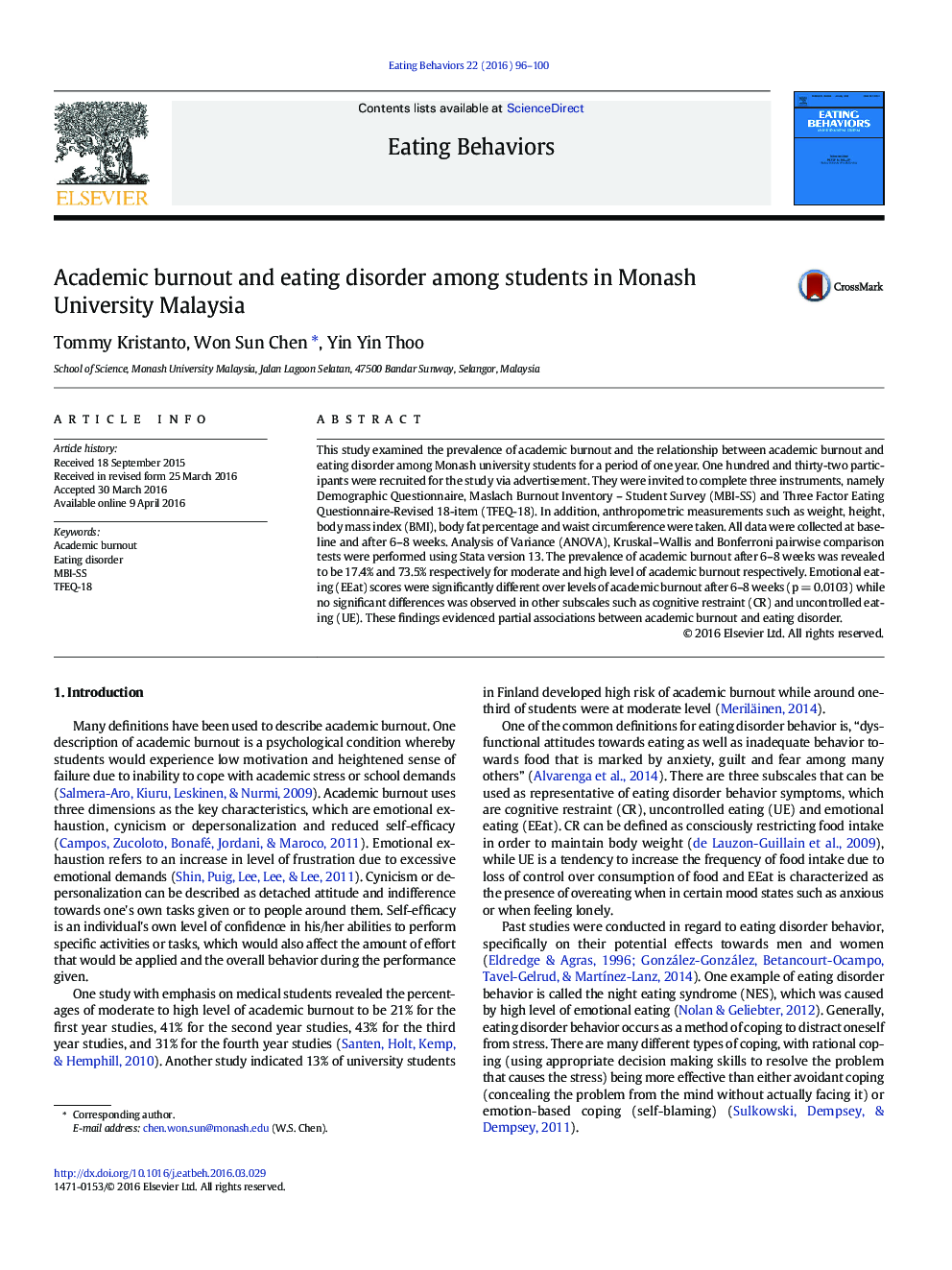| Article ID | Journal | Published Year | Pages | File Type |
|---|---|---|---|---|
| 906197 | Eating Behaviors | 2016 | 5 Pages |
•Prevalence of academic burnout after 6-8 weeks was found to be 17.4% for moderate level of academic burnout.•Prevalence of academic burnout after 6-8 weeks was found to be 73.5% for high level of academic burnout.•Emotional eating subscale scores were significantly different over academic burnout levels after 6-8 weeks (p = 0.0103).•These findings evidenced partial associations between academic burnout and eating disorder.
This study examined the prevalence of academic burnout and the relationship between academic burnout and eating disorder among Monash university students for a period of one year. One hundred and thirty-two participants were recruited for the study via advertisement. They were invited to complete three instruments, namely Demographic Questionnaire, Maslach Burnout Inventory – Student Survey (MBI-SS) and Three Factor Eating Questionnaire-Revised 18-item (TFEQ-18). In addition, anthropometric measurements such as weight, height, body mass index (BMI), body fat percentage and waist circumference were taken. All data were collected at baseline and after 6–8 weeks. Analysis of Variance (ANOVA), Kruskal–Wallis and Bonferroni pairwise comparison tests were performed using Stata version 13. The prevalence of academic burnout after 6–8 weeks was revealed to be 17.4% and 73.5% respectively for moderate and high level of academic burnout respectively. Emotional eating (EEat) scores were significantly different over levels of academic burnout after 6–8 weeks (p = 0.0103) while no significant differences was observed in other subscales such as cognitive restraint (CR) and uncontrolled eating (UE). These findings evidenced partial associations between academic burnout and eating disorder.
